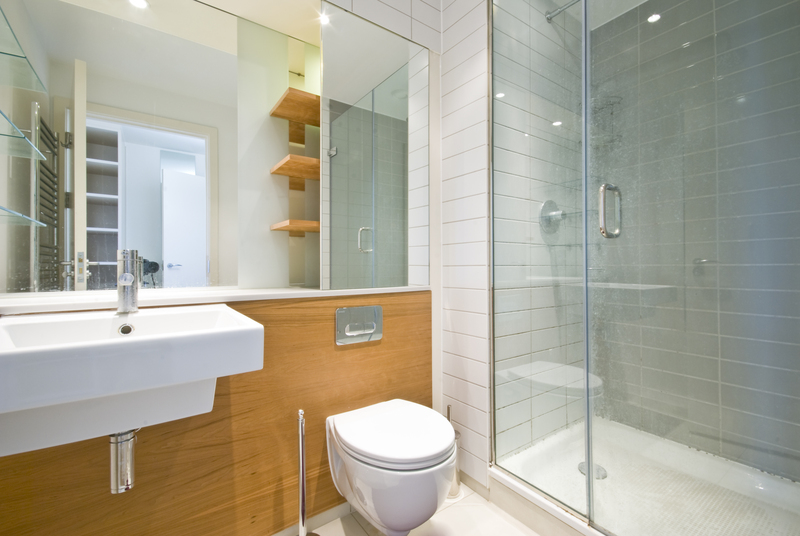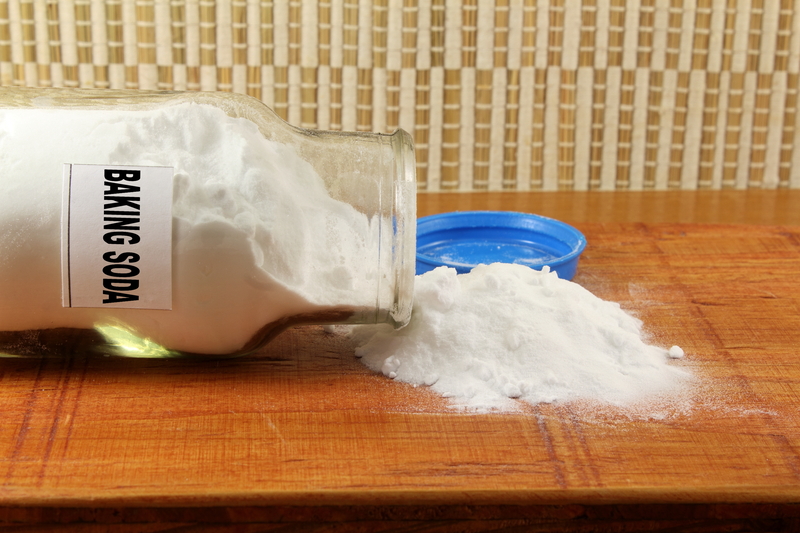Exploring the Necessity of Clean Air in Home and Work Environments
Posted on 04/07/2025
Clean air is essential for sustaining a healthy and productive life. Often taken for granted, the quality of the air we breathe indoors--both at home and in workplaces--directly affects our health, well-being, and efficiency. In today's industrialized and urbanized world, indoor air pollution is a growing concern, with various pollutants seeping into our living and working spaces.
This comprehensive article delves into the critical necessity of clean air in home and work environments, discussing the sources of indoor pollution, the implications on health, the benefits of maintaining pure air, and effective solutions for improving indoor air quality. Whether you're a homeowner, renter, or business professional, understanding the significance of clean air can lead to healthier, more productive lifestyles.
The Foundations of Indoor Air Quality
What is Indoor Air Quality (IAQ)?
Indoor Air Quality (IAQ) refers to the condition and composition of air within and around buildings as it relates to the health and comfort of occupants. Factors influencing IAQ include levels of pollutants, ventilation, presence of allergens, humidity, and temperature.
- Particulates: Dust, mold, pollen, and pet dander.
- Gaseous Pollutants: Carbon monoxide, radon, volatile organic compounds (VOCs).
- Biological Agents: Bacteria, viruses, fungi.
Sources of Indoor Air Pollution
There are numerous sources of contamination that can compromise air purity in homes and workplaces:
- Household Cleaning Products: Many contain chemicals that release VOCs into the air.
- Building Materials: Paint, varnishes, carpets, and furniture can off-gas toxins.
- Tobacco Smoke and Cooking Fumes
- Poor Ventilation: Traps pollutants and increases humidity.
- Outdoor Sources: Pollen, vehicle exhaust, and industrial emissions can infiltrate indoor spaces.

Health Implications of Poor Indoor Air
Short-Term Effects
Exposure to poor quality indoor air can cause a range of immediate health symptoms:
- Irritation of eyes, nose, and throat
- Headaches and dizziness
- Fatigue and difficulty concentrating
- Aggravation of asthma and allergies
Long-Term Health Risks
Unaddressed, chronic exposure to contaminated indoor air can lead to serious health conditions:
- Respiratory diseases, such as chronic obstructive pulmonary disease (COPD) and asthma
- Cardiovascular complications
- Cancer, particularly from exposure to radon and asbestos
- Developmental issues in children and reproductive effects in adults
Why Clean Air is Essential in Home Environments
Creating Healthy Living Spaces
The home is a sanctuary--a place where families unwind, children play, and we all seek comfort. Ensuring clean indoor air in homes is crucial for promoting good health and comfort:
- Reduces Allergens: Limits exposure to dust mites, pet dander, and mold, reducing allergy symptoms.
- Prevents Disease: Clean air limits the transmission of airborne pathogens and bacteria.
- Improves Sleep Quality: Breathing pure air helps people sleep more soundly, leading to better mood and cognitive function.
Special Considerations for Vulnerable Groups
Infants, elderly adults, and individuals with pre-existing health conditions are particularly susceptible to the effects of dirty air. Asthma in children, for example, is greatly impacted by indoor air contaminants. Therefore, prioritizing air cleanliness at home is not just an option--it's a necessity.
The Necessity of Pure Air in Work Environments
Boosting Employee Productivity and Morale
Clean air at workplaces is directly linked to productivity and employee satisfaction. Poor air quality can dull cognitive abilities, reduce focus, and increase absenteeism due to illness. In contrast, breathable, oxygen-rich environments help workers stay energized, alert, and motivated.
Legal and Occupational Safety Considerations
- Compliance: Many countries have strict regulations mandating safe indoor air quality standards for commercial offices and industrial settings.
- Reduced Liability: Employers who focus on improving air quality reduce the risk of lawsuits and compensation claims related to health hazards.
- Enhanced Company Image: A commitment to employee well-being, including air quality, elevates the business's reputation.
Industry-Specific Air Quality Challenges
Certain industries face unique air quality threats:
- Healthcare: Higher risk of airborne infections demands high-efficiency filtration and ventilation.
- Manufacturing: Chemical fumes, dust, and particulate matter can create hazardous working conditions.
- Offices: Inadequate ventilation systems may lead to Sick Building Syndrome, characterized by symptoms like headaches and respiratory problems.
Monitoring and Improving Indoor Air Quality
How to Assess Indoor Air Hygiene
Regularly monitoring the state of indoor air is fundamental to identifying and tackling pollution sources. Tools and methods include:
- Air Quality Monitors: Devices that measure levels of pollutants like CO2, PM2.5, VOCs, and humidity.
- Professional Inspections: Experts can identify hidden issues such as mold, asbestos, or radon.
- Simple Home Tests: Use DIY kits to check for specific pollutants or allergens.
Strategies for Ensuring Clean Air at Home and Work
- Ventilation: Open windows regularly and use exhaust fans in kitchens and bathrooms to expel contaminants.
- Air Purifiers: HEPA-filter air purifiers are effective in removing particulates and some allergens.
- Control Humidity: Dehumidifiers can prevent the growth of mold and mildew in damp areas.
- Reduce Chemical Usage: Select non-toxic, eco-friendly cleaning products to minimize VOC release.
- Filter Replacements: Regularly change HVAC and appliance filters to maintain optimal air flow.
- Maintain Plants: Certain indoor plants can help absorb toxins and improve air quality.
- No Smoking Indoors: Enforce a strict no-smoking policy within enclosed environments.
Recent Advances in Indoor Air Quality Technology
Smart Air Quality Solutions
Modern technology is revolutionizing indoor air management. Some advancements include:
- Intelligent Air Sensors: Smart devices provide real-time IAQ updates via mobile apps, allowing immediate action if pollutant levels rise.
- Automated Ventilation Systems: Responsive systems adjust ventilation rates based on detected air pollution.
- UV-C Light Purification: Strike down airborne pathogens using safe, controlled doses of ultraviolet light.
- Integrated Building Management: Modern buildings increasingly incorporate centralized air quality monitoring into their infrastructure.
Benefits of Maintaining Clean Air Indoors
- Enhanced Health and Immunity: Reduced rates of illnesses, allergies, and chronic respiratory issues.
- Boost in Cognitive Function: Clear air supports sharper focus, memory, and creativity.
- Greater Comfort and Relaxation: Favorable indoor environments promote calm and reduce stress.
- Lower Medical Costs: Fewer health problems mean decreased medical absences and lower healthcare bills.
- Environmental Impact: Some clean air technologies help reduce energy consumption and minimize ecological footprints.
Common Myths and Misconceptions About Indoor Air Quality
"Outdoor Air is Always Worse Than Indoor Air"
This is a prevalent fallacy. Studies show indoor air can sometimes be up to five times as polluted as outdoor air due to lack of ventilation and build-up of toxins.
"All Air Purifiers are the Same"
Not all air cleaning devices are created equal. HEPA filters excel at capturing particles but are ineffective against gases, while activated carbon filters trap chemicals and odors.
"If I Don't Smell Anything, The Air is Clean"
Many harmful pollutants are odorless and undetectable without specialized equipment. Radon, carbon monoxide, and certain VOCs have no scent but pose substantial health threats.
Legislation and Standards for Indoor Air Quality
- World Health Organization (WHO): Sets global guidelines for pollutant limits and safe exposure.
- U.S. Environmental Protection Agency (EPA): Offers recommendations and resources for maintaining healthy indoor air at work and home.
- Occupational Safety and Health Administration (OSHA): Regulates acceptable exposure levels in the workplace.
Being familiar with and complying with these standards is vital for ensuring safe air quality in all buildings.

Creating a Sustainable Clean Air Culture
Fostering an environment that prioritizes air cleanliness is not just about deploying gadgets or installing purifiers--it's about long-term, sustainable habits. Education plays a pivotal role. Teaching families, employees, and building managers about the risks of indoor air pollution and best practices for improvement is crucial for lasting change.
Conclusion: Prioritizing Clean Indoor Air for a Healthier Future
As our modern lives become increasingly urbanized and our time spent indoors climbs, the necessity for clean air in both home and work environments is more evident than ever. Prioritizing indoor air cleanliness is not only an act of self-care but a communal responsibility that protects vulnerable populations and elevates overall quality of life.
By understanding pollution sources, health implications, technological solutions, and sustainable practices, we can all play a part in ensuring that our living and working spaces remain healthy sanctuaries. Clean air indoors isn't a luxury--it's a necessity for comfort, well-being, and long-term health.
Start exploring how you can improve the air you breathe today--for yourself, your family, your colleagues, and future generations.




